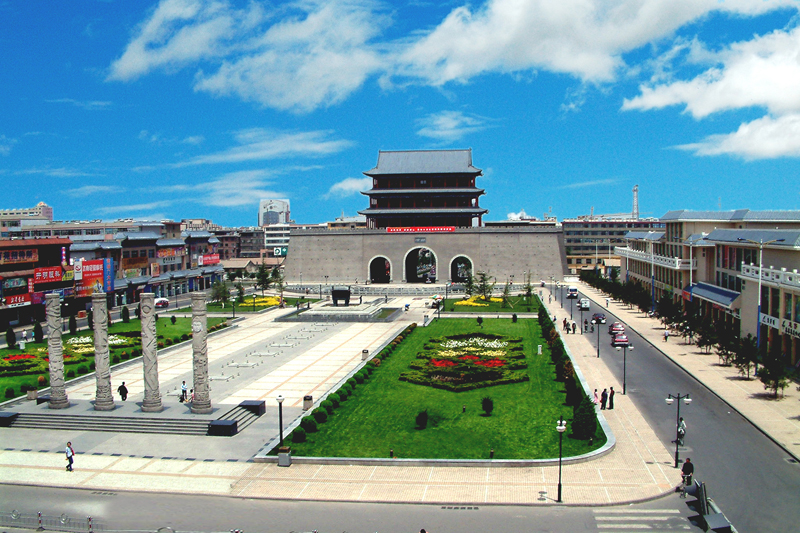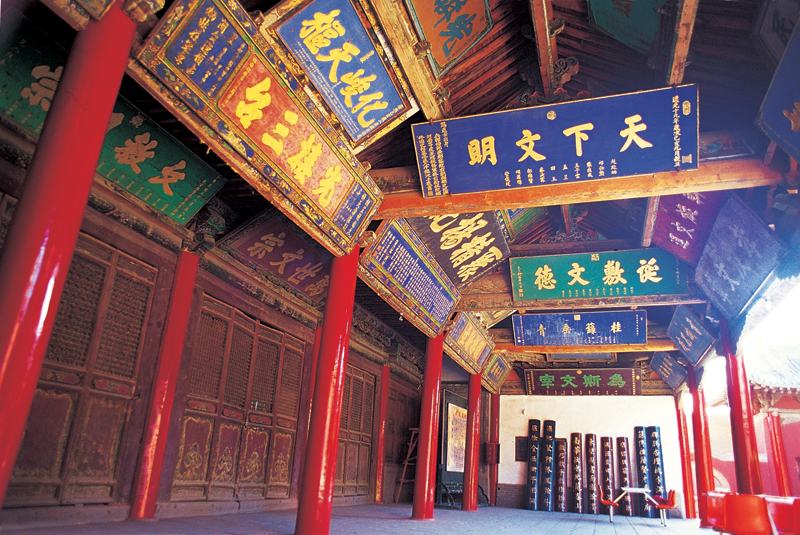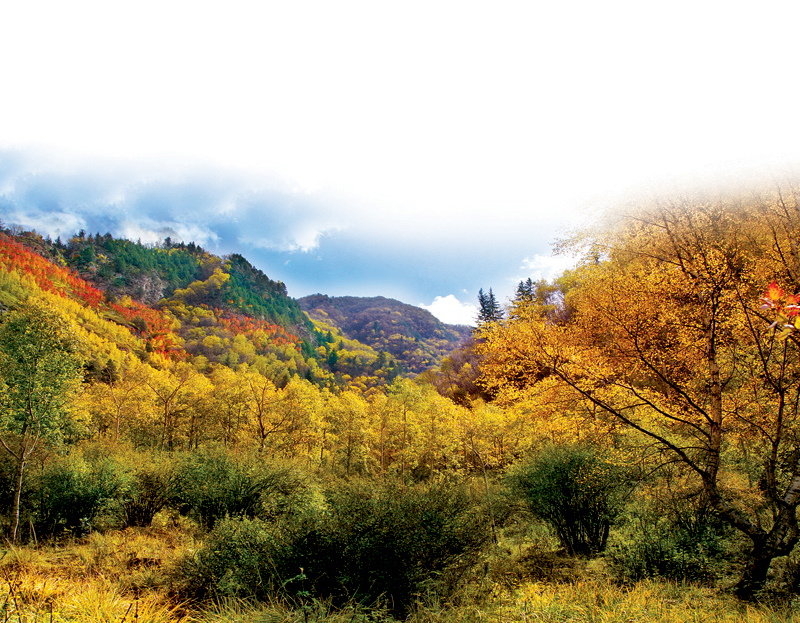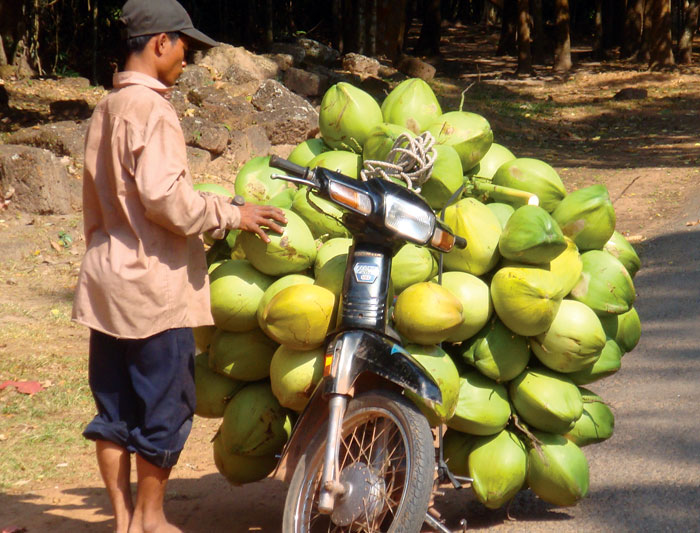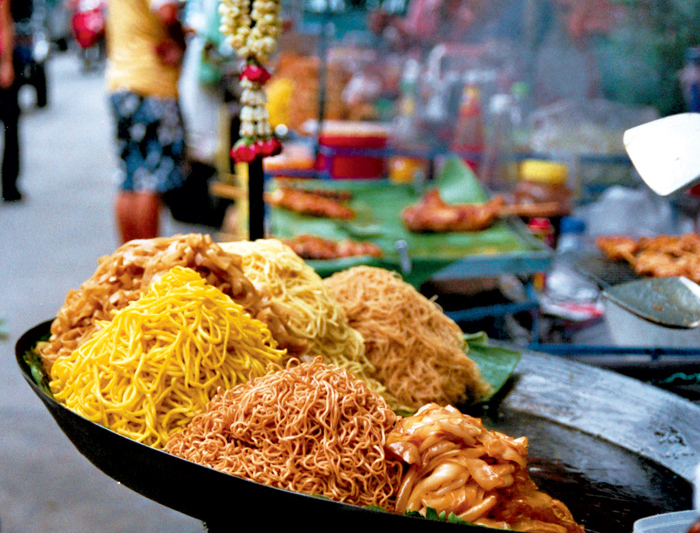Wuwei City
Wuwei, in ancient times called Liangzhou, is the eastern terminus of the Hexi Corridor. It was a key link for the Silk Road. In 121 B.C. Emperor Wudi of the Han Dynasty sent his Great General Huo Qubin here to defend the Hexi Corridor against the Hun invaders. To celebrate the winning of war, Wudi gave the name Wuwei to this area in honor of the Great General’s military prowess. It is the famous historical and cultural city, opening to foreign countries, known as “The City of China Tourism Symbol"; “The Hometown of Chinese Wine"; “The Historical Testimony of the Ownership of Tibet" and “The Unique Land for Raising White Yak " As Wuwei lies in the converging region where the Loess, Qinghai-Tibet and the Inner Mongolia-Xinjiang Plateau meet, the terrain tilts from south to north and leans from southwest to northeast, with elevations ranging from 1,020 to 4,874 meters. There are three geomorphic sections as Qilian Mountains in south, the corridor plain in central part and desert in north. Because of its typical continental climate, the annual average temperature is 7.8 °C with rainfall between 60 to 610 mm, evaporation capacity between 1400 to 3010 mm. The sunshine duration lasts between 2200 to 3030 hours, frost-free days between 85 to 165 days. The solar radiation ranges from 127 to 138 kilocalories per square centimeter. In Wuwei, there are two national-level nature reserves, four national 4As national parks and three provincial nature reserves. “Galloping Bronze Horse Treading on Flying Swallow", also named “Galloping Bronze Horse", is the bronze sculpture in Han Dynasty. It was unearthed from Leitai Tomb in Wuwei in 1969. Leitai Tomb was a joint burial of Mr. and Mrs. Zhang. The military officer Zhang, stationed in Zhangye in the Eastern Han Dynasty, was buried with his wife. Unearthed from this tomb, the bronze horse is treasured in the Provincial Museum of Gansu. It is 34.5cm tall, 45cm long and 13cm wide. In 1985, China National Tourism Administration took it as the symbol for China Tourism With a long history and rich culture, Wuwei was the ancient capital city of five Liang states and auxiliary capital in Xixia Regime. There are many cultural relics and historic sites in Wuwei. Famous cultural relics include China Tourism symbol--Galloping Bronze Horse, and the unique treasure Xixia Stele. Tianti Mountain Grottoes have been regarded as the first ever in history, which was built in North Liang period. the Wen Shrine (Wen Temple, or Confucius Temple), known as “The Crown of the West Part of Longshan Mountain" built in 1439 of the Ming Dynasty; White Pagoda Temple witnessed the meeting of the Prince of Yuan Dynasty Kuorui and Tibetan Buddhist leader Saban. There are ancient relic Haizang Temple in the Silk Road, the Buddhist resort Kumarajiva Temple Pagoda, 1000-year-old Imperial Niangniang Site. Qijia culture ruins, Shajing cultural relics and ancient Great Wall site are even older. Wuwei has six Major Historical and Cultural Sites Protected at the National Level and 540 Historical and Cultural Sites Protected at the Provincial or City- Level. Wuwei Wen Temlpe (Confucius Temple) AAAA)
Wuwei Wen Temple, also known as Confucius Temple or Wen Shrine, is located in the southeast of Wuwei. Claimed to be “The Largest School in Longyou Area (old name of Gansu Province)" , the temple is an architectural complex with imperial style and spectacular grandeur. It was first built in 1939 and got its sheer size after several expansions. Facing south and covering 1500 square meters, the temple is a sacred place for men of letters to study and worship Confucius in all ages. Wen Temple has three groups of buildings respectively situated in the east, middle and west. In the east is located the Wenchang Palace for worshiping the Great Wenchang Spirit, with the temple gate to the south and Tsung shrine to the north. At the center of the temple is Confucius Temple for worshiping Confucius, “The teacher for all ages". It is an architectural complex which has Dacheng Hall at the centered, Halberd Gate , Lingxing Gate, Zhuangyuan (Scholar) Bridge and Pan-chi Pond in the south, Zunjing Hall in the north, and ancient Liangzhou Confucian Academy in the west. With a symmetrical layout and solid structure, the temple stands grandly in a quiet and extraordinarily scenery of towering pine and cypresses. There are carved beams and painted pillars as well as plenty of inscription steles and tablets, worth your close appreciation. Wuwei Museum, the second largest history museum in Gansu Province, now is within Wuwei Wen Temple, preserving more than 44,000 precious relics and antiques. In the museum, there are relics of the Han and Tang Dynasties represented by medical and etiquette wooden slips, wood sculptures and stone inscriptions of epitaph; relics of the Xixia Dynasty represented by Wood Tower (as a cremation urn), wood-engraving and the Golden Bowl; relics of Chinese ancient coins represented by Liangzao Xinquan Coins and Xixia silver coins; relics of Ming and Qing Dynasties represented by porcelains, tablets and Shuilu paintings for religious ritual purpose. All the relics enjoy a high reputation at home and abroad. Leitai Tomb of Han Dynasty (AAAA)
The Leitai Tomb of Han Dynasty, a Major Historical and Cultural Site Protected at the National Level, is located in the Leitai Park on the Beiguan Mid Road, Wuwei City, Gansu Province. It is a large brick-chambered tomb of the late Eastern Han Dynasty, and was discovered by local farmers under an old locust tree in 1969. The tomb has been the largest Hexi tomb found out in Hexi region so far. It is famous for the unearthed treasure, Bronze Galloping Horse Treading on a Flying Swallow, now the Logo of Chinese tourism. According to the record on the horse chest of the horse tomb figure unearthed, it was the tomb of General Zhang of Zhangye built between 186 to 219 A.D.. The length of the path leading to the grave is 19.34 meters and the whole coffin chamber was divided into the front-chamber, the middle chamber, the back-chamber and three annex compartments. Though the tomb was ransacked by thieves many times, there are many remains that have been excavated. It is so called an “underground museum" by archaeologists. Among the unearthed antiques, there are 231 items of gold, silver, bronze, pottery, iron, jade or stone wares as well as 30000 ancient coins. Of all the unearthed antiques, 99 pieces of bronze horses and honor figurines are the most exquisite, and the Bronze Galloping Horse Treading on a Flying Swallow is of the greatest artistic value so it has been chosen as a representative of Chinese archaeological culture to travel all over the world and caused great sensations. In September 1971, when accompanying Prime Minster Penn Nouth of the Royal Government of National Union of Kampuchea, Mr. Guo Moruo found the Bronze Galloping Horse in Gansu Museum and named it “Bronze Galloping Horse Treading on a Flying Swallow. Wuwei Desert Park (AAAA)
Wuwei Desert Park, located in front edge of the Tengger Desert 19 km east of Wuwei city of Gansu province, is a tourism attraction with an perfect integration of desert scenery, grassland style and garden features. Wuwei Desert Park was first built in 1986. With more than 350 kinds of sand plants were brought into from all over the world in 1994, the park was built into a scientific and interesting desert botanical garden. The Park covers a total area of 8 million square meters, which has and 5 million sand plants of 20 breeds. The green coverage rate of the park is above 80℅. The Desert Park has a swimming pool with an area of more than 400 square meters, a race course, sand bathing ground, Damo pavilion, Taoxin pavilion, Yuanyang pavilion and Taohua pavilion. There are undulating sand dunes and a variety of plants in the Desert Park such as sacsaoul, birch, red willow, agriophyllum, tree canopy and so on. It’s the biggest park with sceneries of desert and oases. The professors from the department of Geography of Lanzhou University redesigned the Desert Park, aiming to build Wuwei Desert Park into a showcase for achievements in desertification control, a tourist attraction and a recreation center. Tianzhu Three Gorges Forest Park (AAA)
Tianzhu “Three Gorges" is situated in the southwest region of Tianzhu Tibetan Autonomous County and in the heartland of Qilian Mountain. Being the largest forest park in Gansu Province, its forest coverage rate is 58%. It belongs to Qilian National Nature Reserve and is a water conservation area in the upper Yellow River. This is a place full of unique ethnic customs and strong religious atmosphere. Tianzhu Three Gorges Forest Park is divided into several scenic spots——Shimen Gully, Jinsha Gorge, Zhucha Gorge, Xianming Gorge, Benkang Danxia Landform, Maya Snow Mountain and Heavenly Lake, and Tiantang Temple Tibetan Buddhism Culture scenic spot. The natural scenery here is enchanting; cultural landscape is quite unique; and its Tibetan Buddhist culture is profound. There are both lofty, steep peaks, and meandering streams; both snow-capped mountains, and perennially warm springs; both rolling grasslands, and winding, shadowy valleys; both evergreen arbors and shrubs, and colorful, odorous flowers; as well as the famous Tibetan Buddhism temple——Tiantang Temple, and the magnificent water diversion project “From Datong River to Qinwangchuan District". So this is a summer resort attracting numerous visitors. |
Wuwei City
December 21, 2016
VIEWED: 0
Recommended Products
see all-
Best of Vietnam & Cambodia
HKD 2130 + Book -
Cambodia & Thailand Traveller
HKD 2220 + Book
